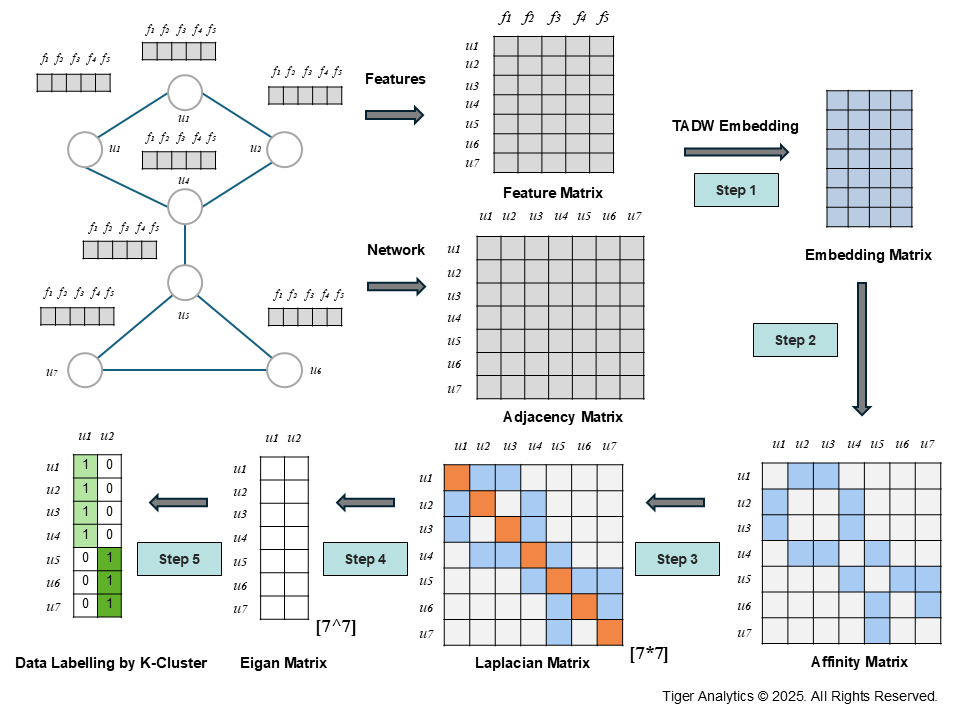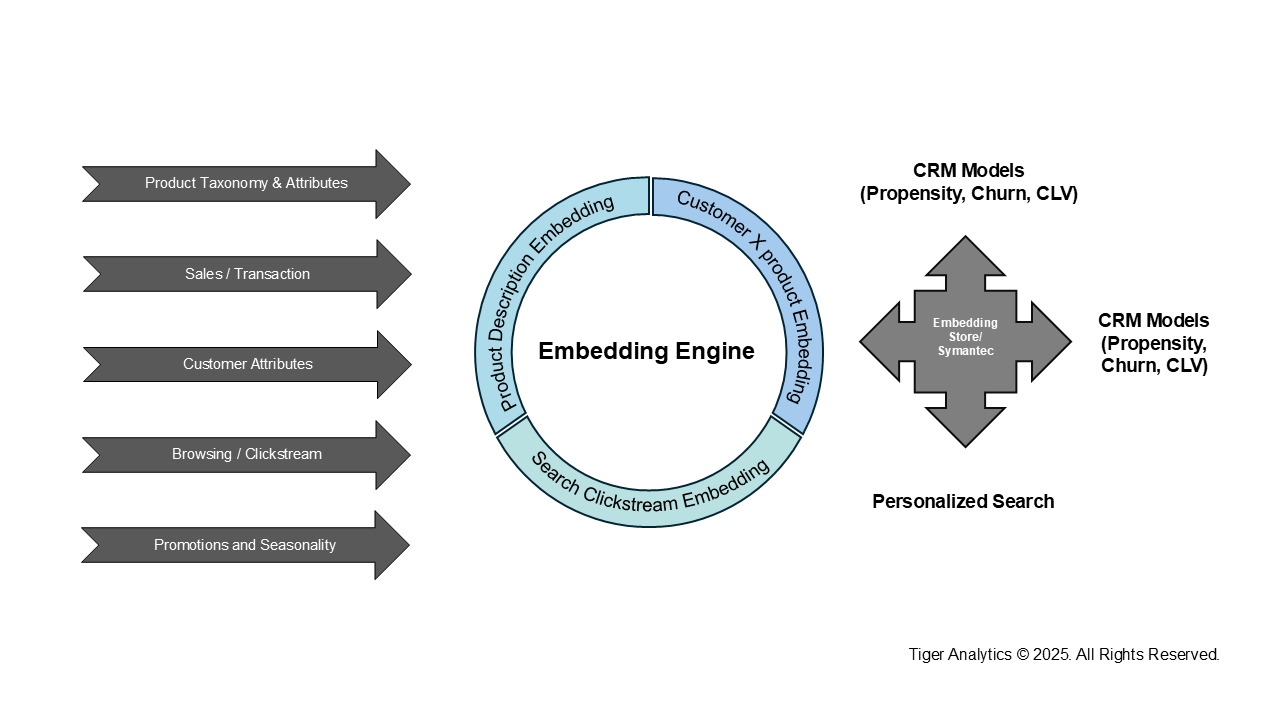Picture this: The data engineering team at a leading retail chain is tasked with integrating customer data from every touchpoint — purchase histories, website clicks, and social media interactions — to create personalized shopping experiences. The goal? To leverage this data for everything from predictive product recommendations to dynamic pricing strategies and targeted marketing campaigns. But the challenge isn’t just in collecting this data; it’s in understanding how to embed it across multiple customer interactions seamlessly while ensuring compliance with privacy regulations and safeguarding customer trust.
The beauty industry today is embracing cutting-edge technology to stay ahead of microtrends and streamline product development, all while improving efficiency and innovation in an increasingly fast-paced market. Brand loyalty is no longer solely dictated by legacy brands; “digital-first” challengers are capitalizing on changing consumer preferences and behaviors. Global Industry Cosmetics Magazine found that 6.2% of beauty sales now come from social selling platforms, with TikTok alone capturing 2.6% of the market. Nearly 41% of all beauty and personal care product sales now happen online, according to NielsenIQ’s Global State of Beauty 2025 report.
Virtual try-on apps, AI/ML-based product recommendations, smart applicators for hair and skin products – the beauty industry is testing, scaling, and rapidly deploying solutions to satisfy consumers who demand personalized experiences that cater to their unique needs. Based on our observations, and conversations with leaders in beauty & cosmetics retailing, we found that to thrive in this dynamic landscape, there is a need to move beyond traditional customer segmentation and delve deeper into customer product affinity.
What is customer product affinity embedding?
Imagine a complex map where customers and products are not locations but points in a multidimensional space. Customer product affinity embedding uses advanced machine learning algorithms to analyze vast amounts of data – everything from purchase history and browsing behavior to customer reviews and social media interactions. Upon processing this data, the algorithms create a map where customers (those who have opted-in, and anonymized, of course) and products are positioned based on the strength of their relationship, with proximity reflecting the degree of relevance, preference, and engagement between them. In short, it helps capture the essence of customer preferences in a mathematical representation.
This approach provides businesses with a deeper understanding of customer-product affinities. At Tiger Analytics, we partnered with a leading beauty retailer to design a system that captures the true essence of customer preferences by focusing on both customer and product nuances. It begins with a harmonized product taxonomy and sanitized product attributes, and incorporates curated customer data from transactions, interactions, and browsing behavior. Together, these elements create an accurate and comprehensive view of customer affinities, allowing businesses to tailor strategies with greater precision.
How does customer product affinity embedding transform business decisions?
Customer product affinity embedding enhances decision-making by capturing the multidimensional interactions between business efforts, customer activities, product characteristics, and broader macroeconomic conditions. Unlike conventional machine learning approaches, which typically focus on solving one problem at a time and require custom feature engineering, this method integrates diverse business signals. Traditional approaches often isolate and aggregate these signals, but they fail to explain the overall variance or underlying business causality, limiting their effectiveness.

Caption: Matrix factorization foundation for affinity matrix
By incorporating deeper insights into customer preferences and behaviors into business strategy, beauty retailers can unlock greater efficiency, relevance, and personalization across various touchpoints. Below are a few ways customer affinity embedding can bring tangible advantages:
- Hyper-Personalized Recommendations: Take, for instance, suggesting a hydrating toner to someone with a high affinity for high-coverage foundations, thereby providing them with relevant products that match their needs and preferences.
- Smart Product Substitutions: Sarah, a regular purchaser of the ‘Sunset Shimmer’ eyeshadow palette, gets a notification suggesting a substitute — ‘Ocean Breeze’, a cool-toned palette with hues she may also enjoy — when her favorite product is out of stock.
- Store Inventory Optimizations: Optimizing inventory levels by predicting demand based on customer affinity. Businesses can avoid stockouts for high-affinity products and minimize dead stock for low-affinity ones, leading to reduced costs and improved customer satisfaction.
- Personalized Search: Traditional search relies on keywords and filters. However, these methods often miss the nuances of the customer’s intent. For example, a search for “foundation” might be someone seeking full coverage, or someone wanting a lightweight, dewy finish. Affinity embedding helps bridge this gap, ensuring more relevant search results.
- Targeted Marketing Campaigns: Consider targeting millennials with a strong affinity for Korean beauty with social media campaigns showcasing the latest K-beauty trends.
- Data-Driven Product Development: If a significant customer segment shows a high affinity for vegan beauty products, but limited options are available, the brand can proactively develop a high-quality vegan makeup line to fill that gap in the market.
- Personalized Buying Journey: Picture a customer searching for false eyelashes on the app, and then being recommended complementary items like glue and party essentials. Additionally, the system can suggest popular shades previously chosen by customers with similar preferences, creating a seamless and personalized shopping experience.
These are just a few examples of how customer affinity embedding can enhance customer engagement and improve the overall shopping experience. Other use cases, such as Trip Mission Basket Builder, Dynamic Pricing/Discounting, and Subscription Box Optimization further demonstrate how this technology can revolutionize customer satisfaction and business efficiency.
Real-world impact of customer affinity embedding on sales and engagement
Customer affinity embedding is a multi-step process that converts customer data points into a mathematical representation that captures the strength of a customer’s relationship with various products.

Caption: Functional architecture
The same embedding features can be transformed into affinity ranks, which serve as inputs for downstream ML models to generate personalized recommendations and provide insights such as:
- Product Similarity
- Customer Similarity
- Customer Affinity to Products
- Product Substitutions
Through our collaboration, the beauty retailer experienced a 4.5% increase in repeat purchases over a 12-month period. Additionally, the brand saw a 3.5% average boost in customer engagement scores within the fashion category, and a 7.8% rise in app usage. The company’s ROI for marketing campaigns also improved, with a 23-basis-point increase across digital channels.
Today, the real question isn’t just ‘what does the customer want?’ – it’s ‘how can we truly understand and deliver it?’
Understanding customer needs isn’t just about analyzing past behaviors, but rather predicting intent and adapting in real time. Customers don’t always explicitly state their preferences. Their choices are shaped by trends, context, and discovery. The challenge for brands is to move from reactive insights to proactive personalization, ensuring that every recommendation, search result, and marketing touchpoint feels intuitive rather than intrusive.
Customer product affinity embedding brings brands closer to the customer by placing the consumer at the heart of every decision. With data-driven customer understanding, brands can build deeper and more personalized connections, driving loyalty and growth.
References:
https://shop.nielseniq.com/product/global-state-of-beauty-2025/
https://www.gcimagazine.com/brands-products/skin-care/news/22916897/2024s-global-beauty-sales-are-powered-by-an-ecommerce-social-selling-boom/





